Sundubu Jjigae (Korean Soft Tofu Stew with Clams & Shrimp)
Sundubu jjigae is a bubbling, spicy Korean soft-tofu stew made with “soon” tofu (silken tofu). My version builds flavor quickly with gochugaru oil (Korean chili–infused oil) and anchovy-kelp stock, plus clams, shrimp, and a touch of well-fermented kimchi. It’s also easy to adapt with beef and/or mushrooms.
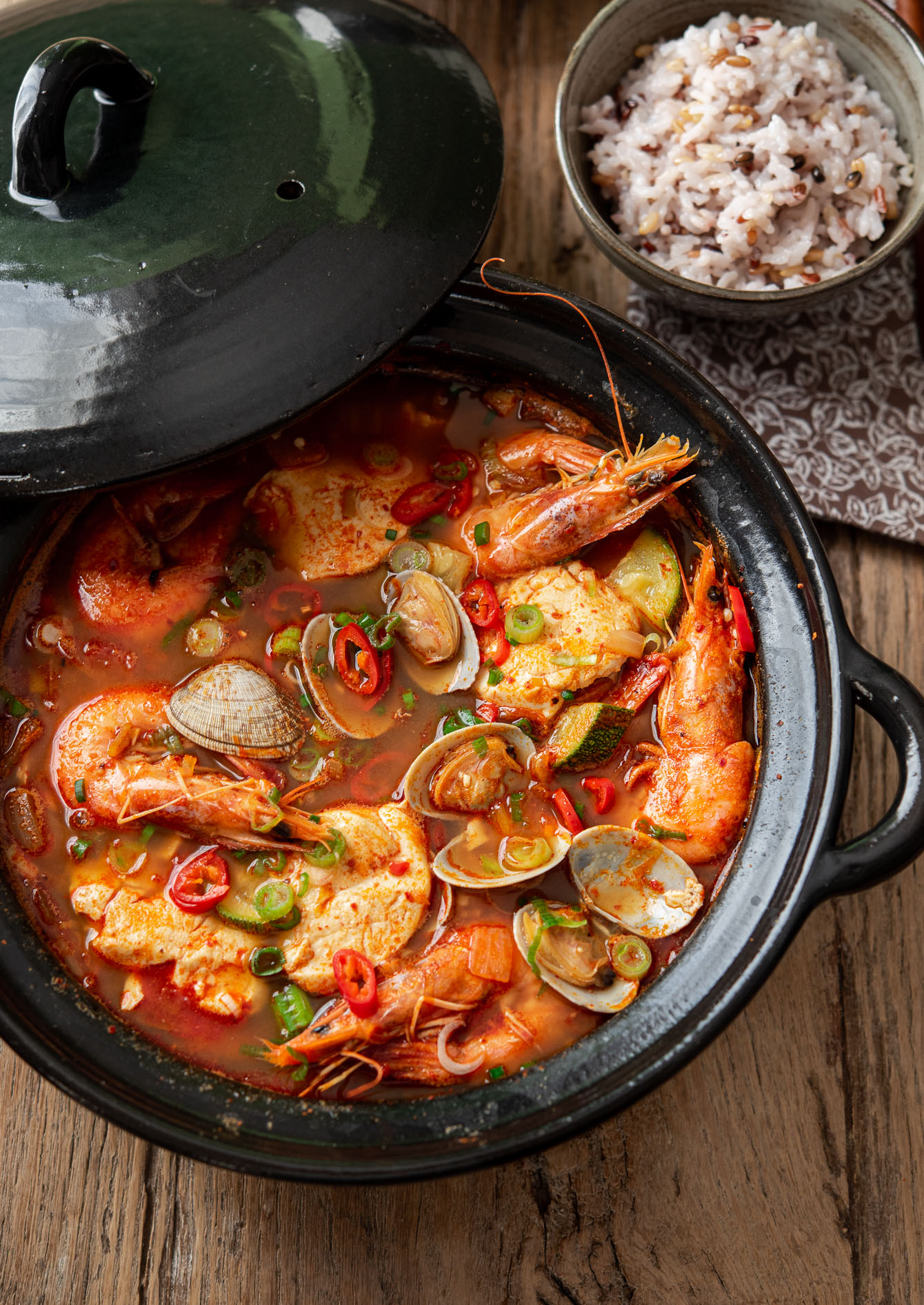
If you ask Koreans to name a stew that feels like home, sundubu jjigae (Korean soft tofu stew) is always near the top of the list. It cooks in about 15 to 20 minutes and brings silky tofu to a bubbling, spicy broth that feels both comforting and hearty.
This recipe uses clams and shrimp, the classic restaurant version in Korea, where the briny clams and shrimp shells deepen the flavor of the stock.
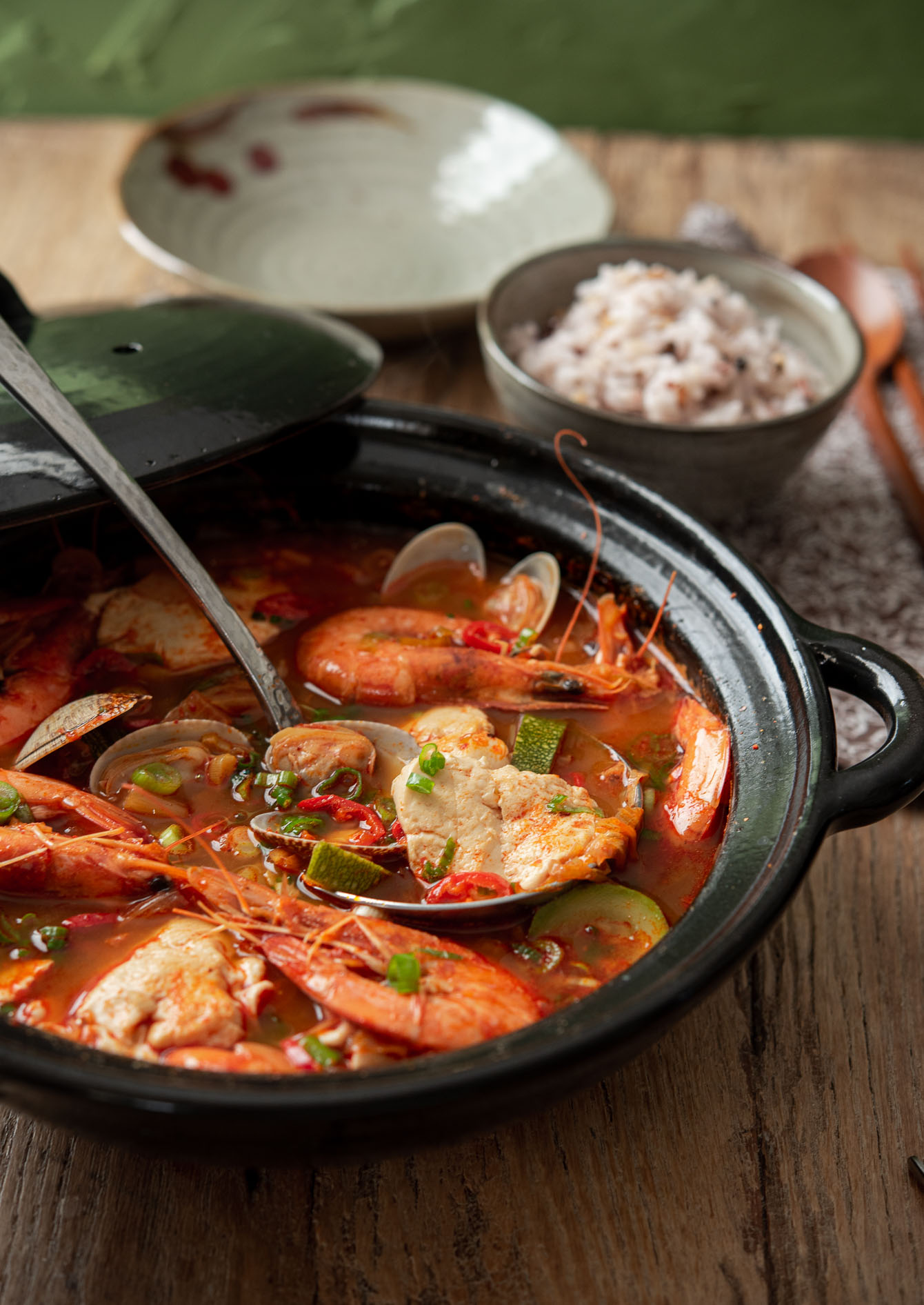
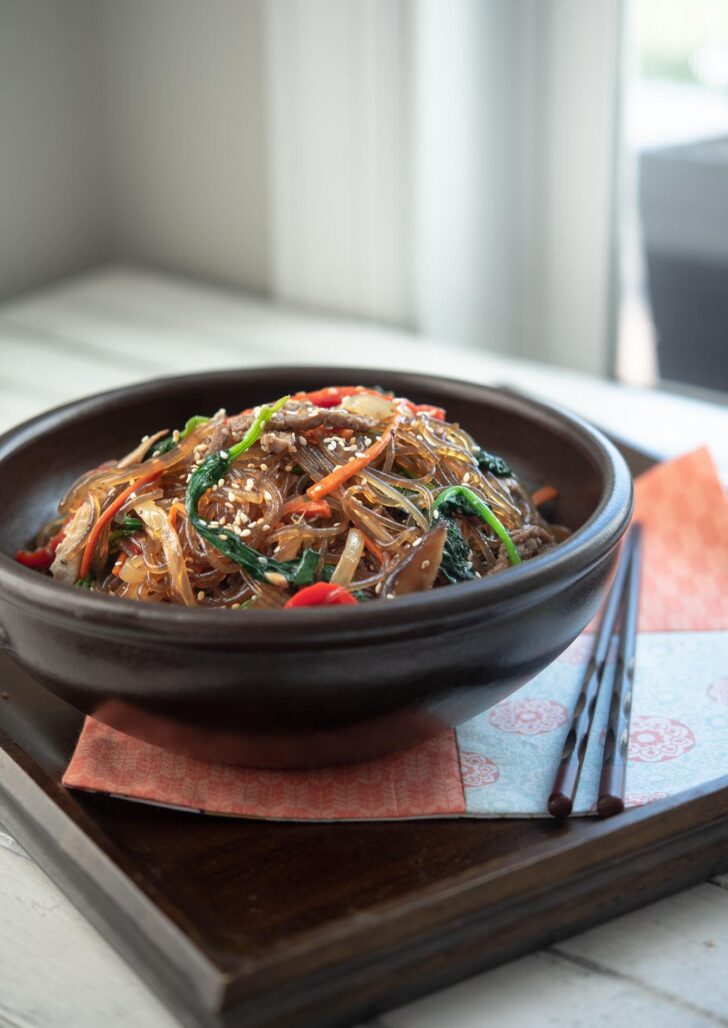
Get new recipes via email:
Sundubu jjigae is sometimes mistaken for kimchi jjigae, but they are quite different. In sundubu, tofu is the star; kimchi may be added for a boost, but it’s optional. Kimchi jjigae is built on aged kimchi and pork, with tofu only in the background.
And on busy days, I even make a tuna sundubu jjigae with canned tuna—it’s ready in about 10 minutes.
How to Choose Tofu for Sundubu Jjigae
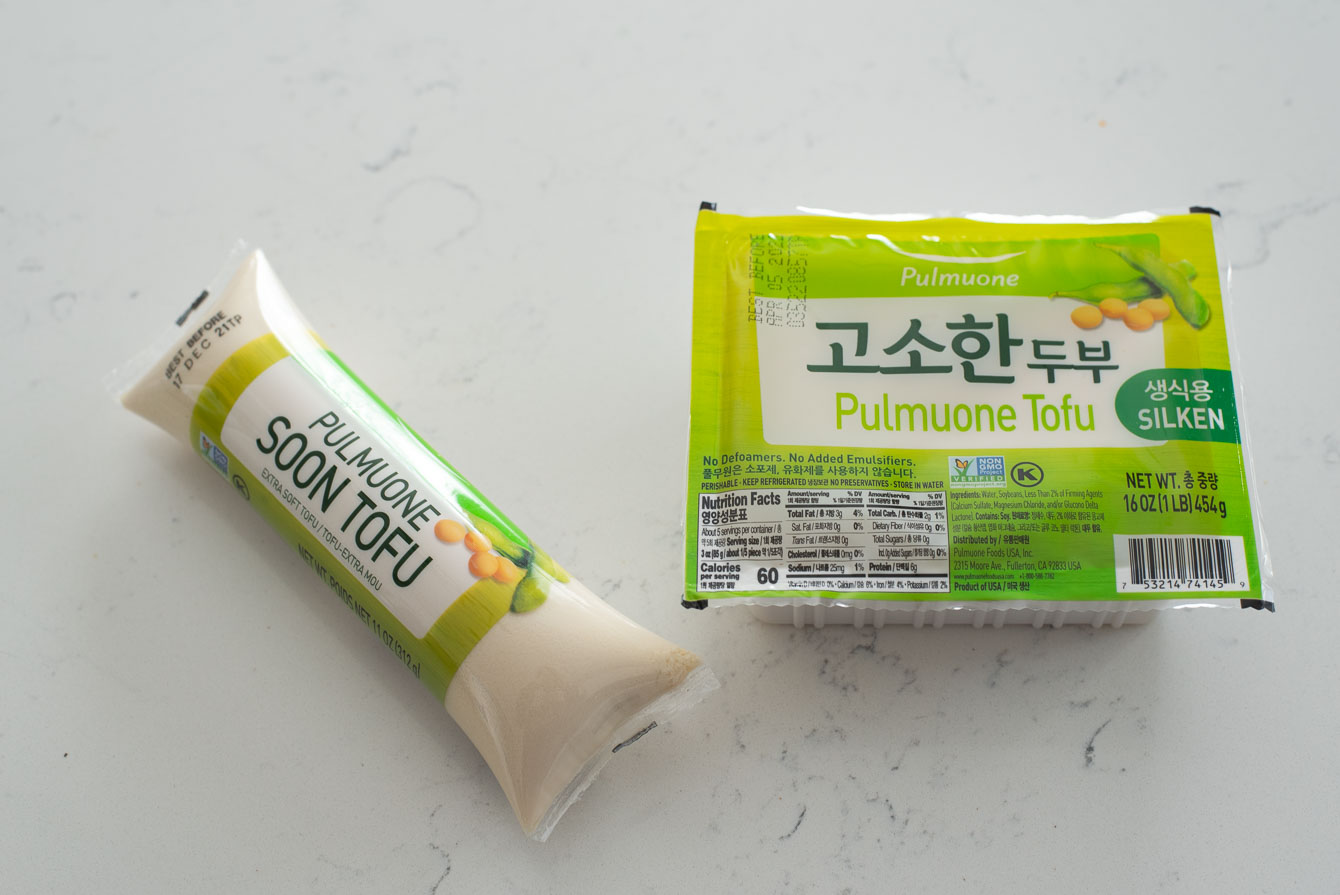
Although sundubu jjigae is often called “soft tofu stew” in English, the tofu you need is actually silken tofu (soon tofu). It’s much softer than the “soft tofu” you may find in Western stores. With its custard-like texture and high water content, it breaks easily into spoonfuls—giving the stew its signature velvety body. Check out my microwave silken tofu recipe for another use of silken tofu.
In Korean markets, you’ll find sundubu in long plastic tubes labeled “soon tofu” or “for stew.” Sometimes it comes in tubs as well. Both work, but the tube style is the most common and convenient. Avoid firm or extra-firm tofu, which won’t absorb the broth or give the same smooth texture.
Other Key Ingredients
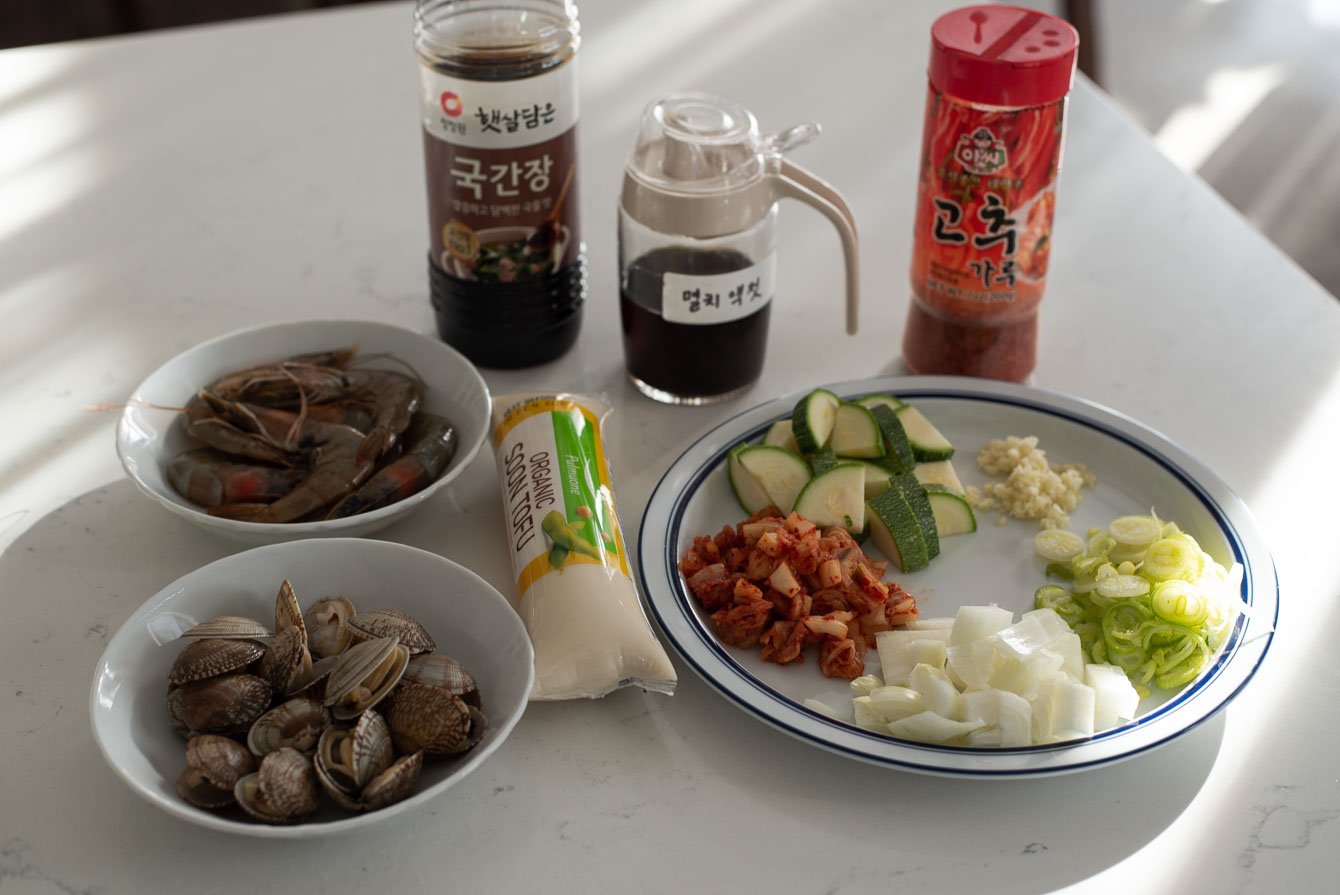
- Seafood: Clams and shrimp are the classic pairing for sundubu jjigae. Clams release a briny sweetness into the broth, while shrimp shells add a deeper, almost roasted flavor as they simmer. I like to cook the shrimp in their shells for that richness, but if you prefer less fuss at the table, peeled shrimp works too. Mussels are another option and will give the stew a more robust, ocean-forward taste.
- Anchovy Stock: This stock is what separates sundubu jjigae from a “quick tofu soup.” Dried anchovies lend a clean, savory backbone, while kelp adds body and a subtle sea aroma. Simmer just long enough, about 4-5 minutes, or the anchovies can turn bitter.
- Kimchi: For the best flavor, use kimchi that is well-fermented and pleasantly sour. Fresh kimchi tastes flat in stew, but aged kimchi transforms the broth with tangy depth and umami. I also like to stir in a spoonful of kimchi juice—it gives the broth a restaurant-style sharpness you can’t get otherwise.
- Seasoning: Korean soup soy sauce (guk ganjang) seasons without overpowering the broth, while a touch of anchovy fish sauce deepens the umami. Unlike regular soy sauce, which can turn the broth dark and heavy, these two keep the flavor bright and the color clear.
Step-by-Step: Making Sundubu Jjigae
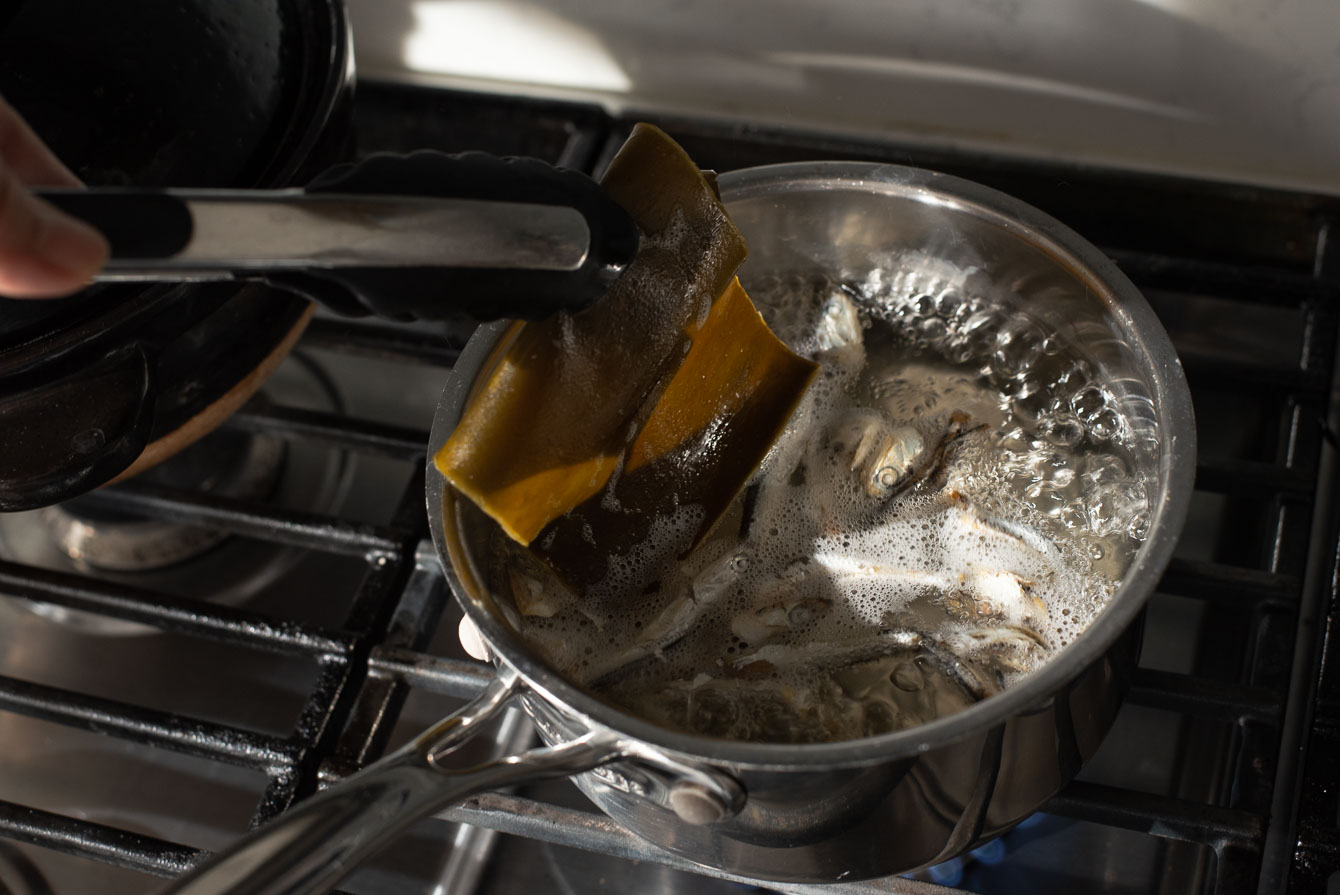
Simmer dried anchovies and kelp in water for a few minutes, then strain.
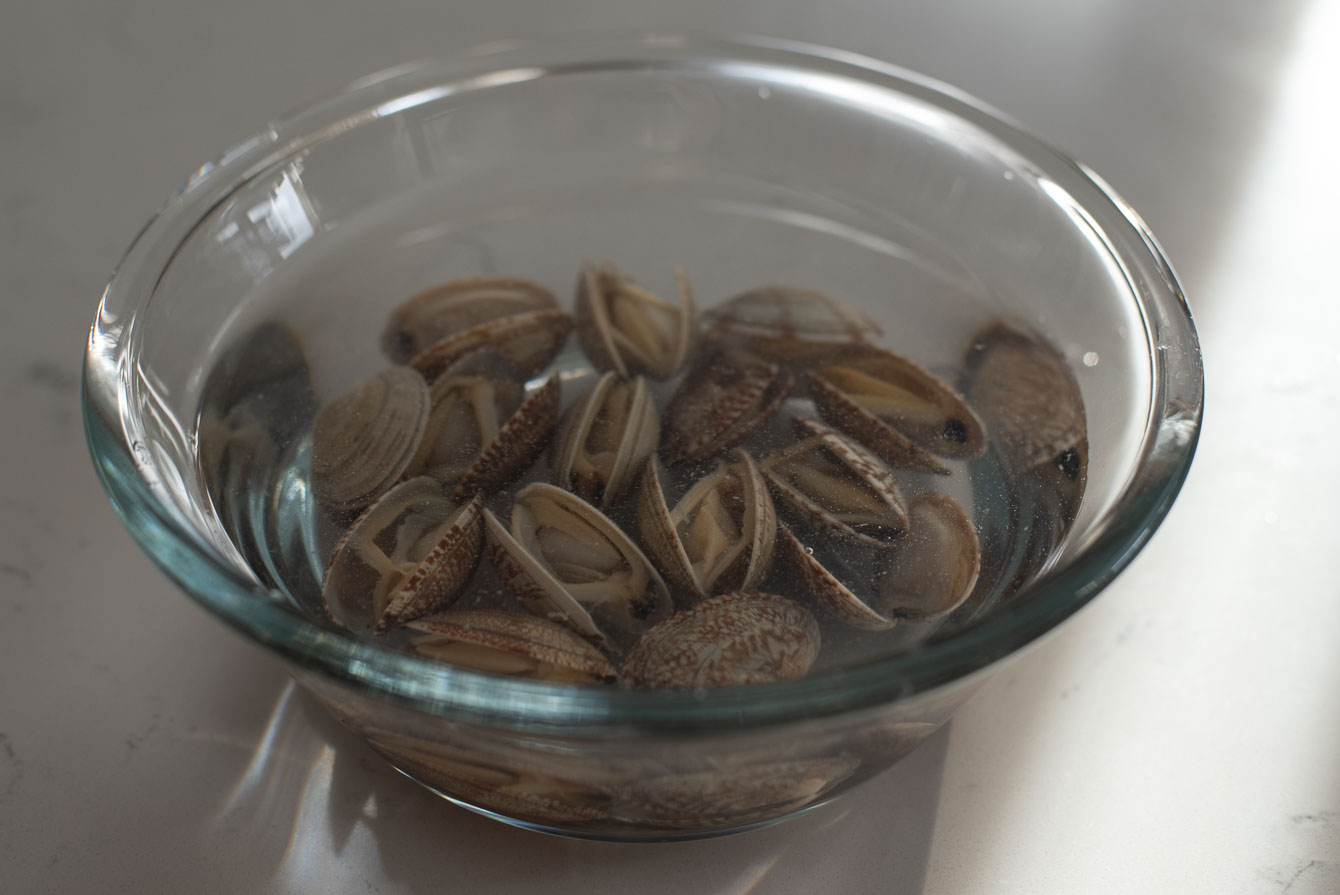
If using frozen clams, soak briefly in cold water and discard any that stay closed.
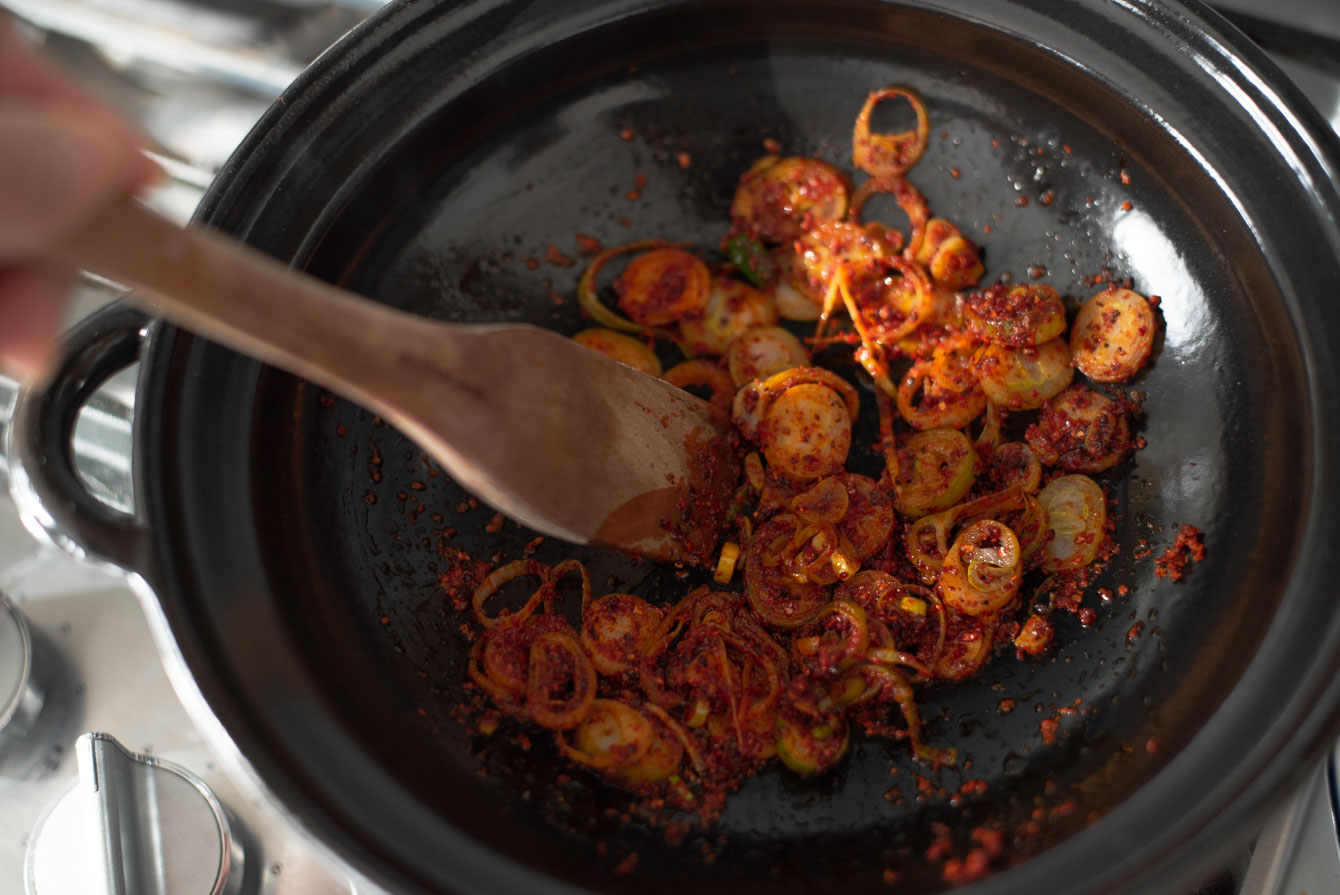
Heat oil, add gochugaru and sliced leek, and stir gently until fragrant (don’t let it burn).
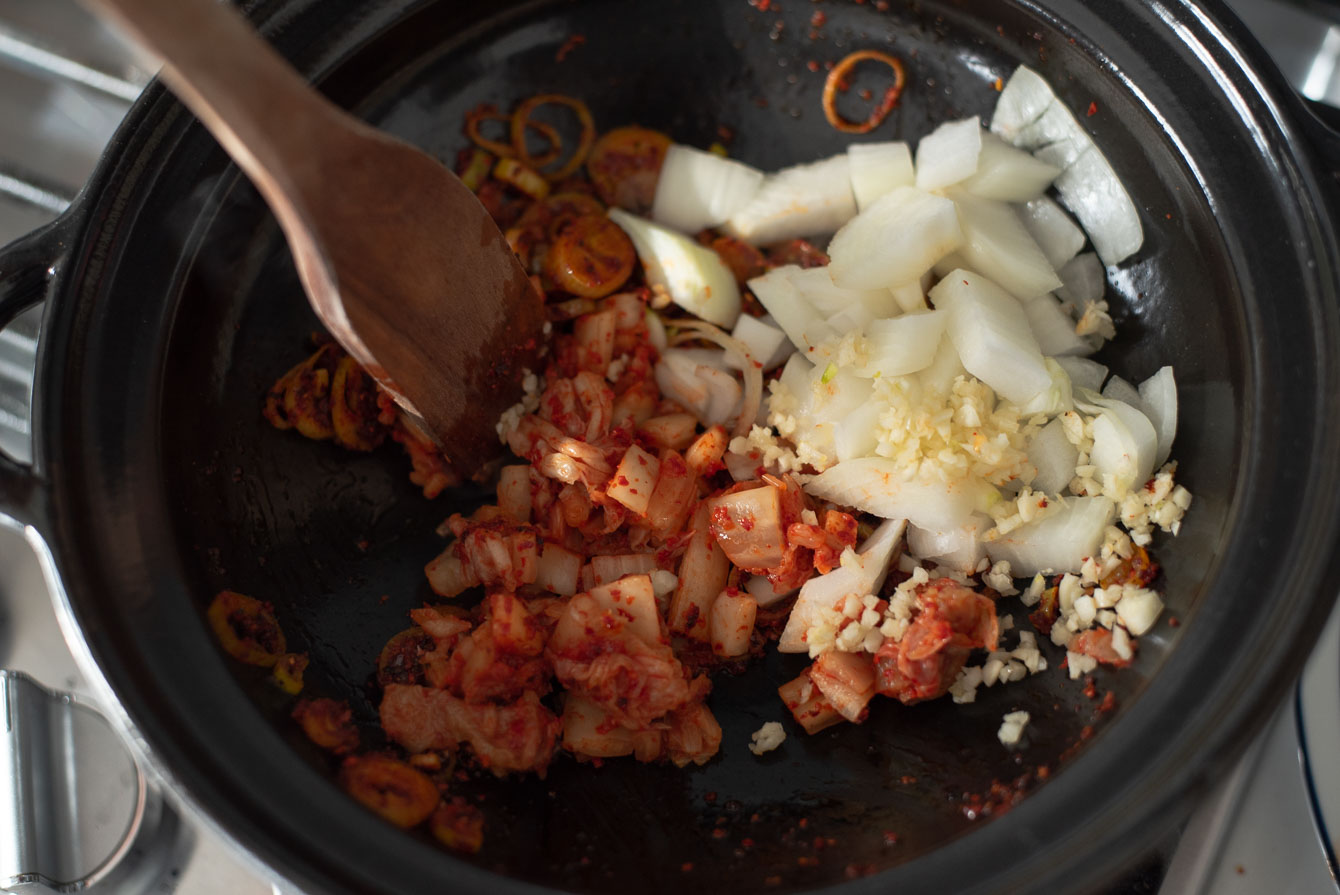
Stir in kimchi, onion, and garlic until softened and glossy.
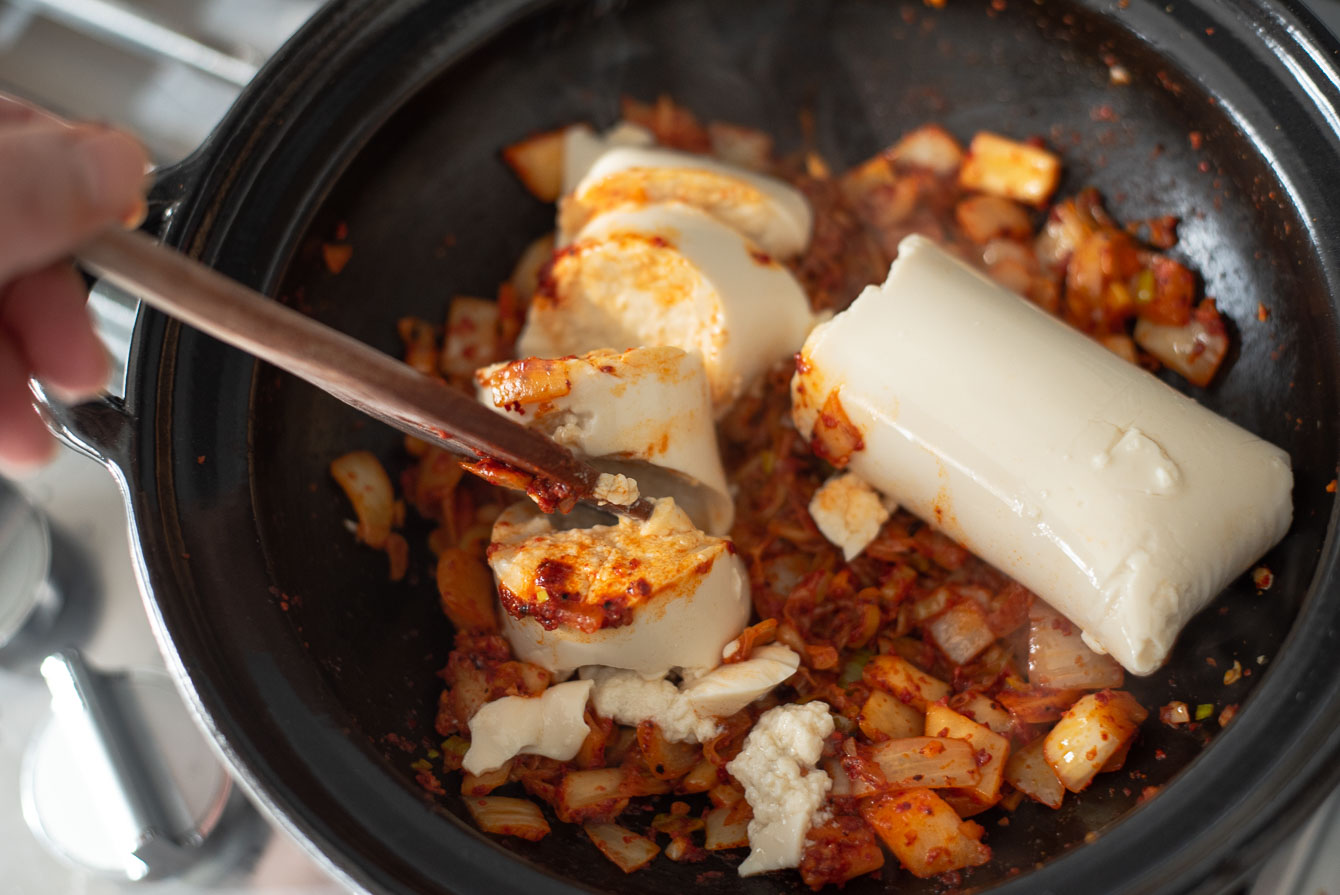
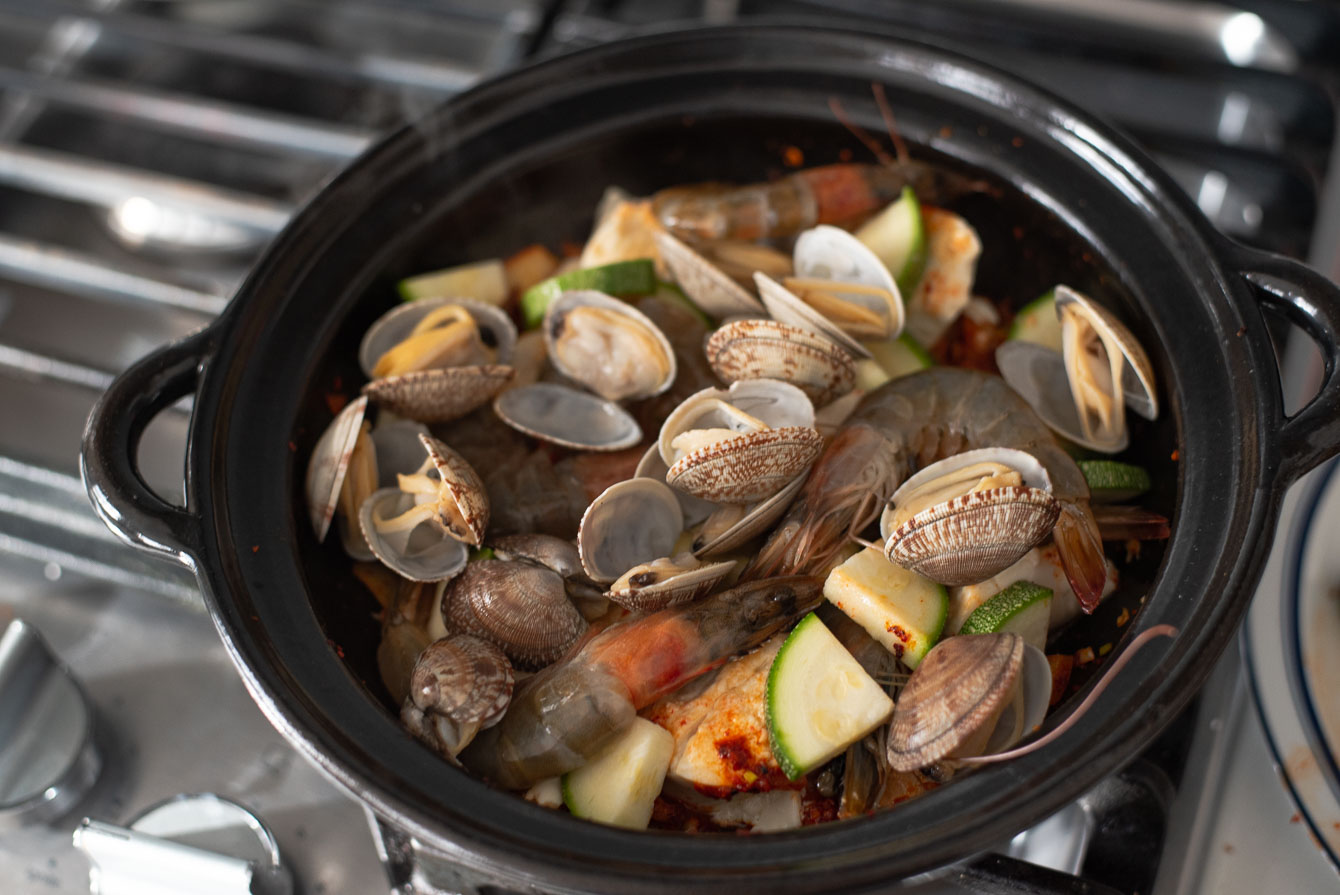
Spoon in the silken tofu in large chunks, then add clams, shrimp, and zucchini.
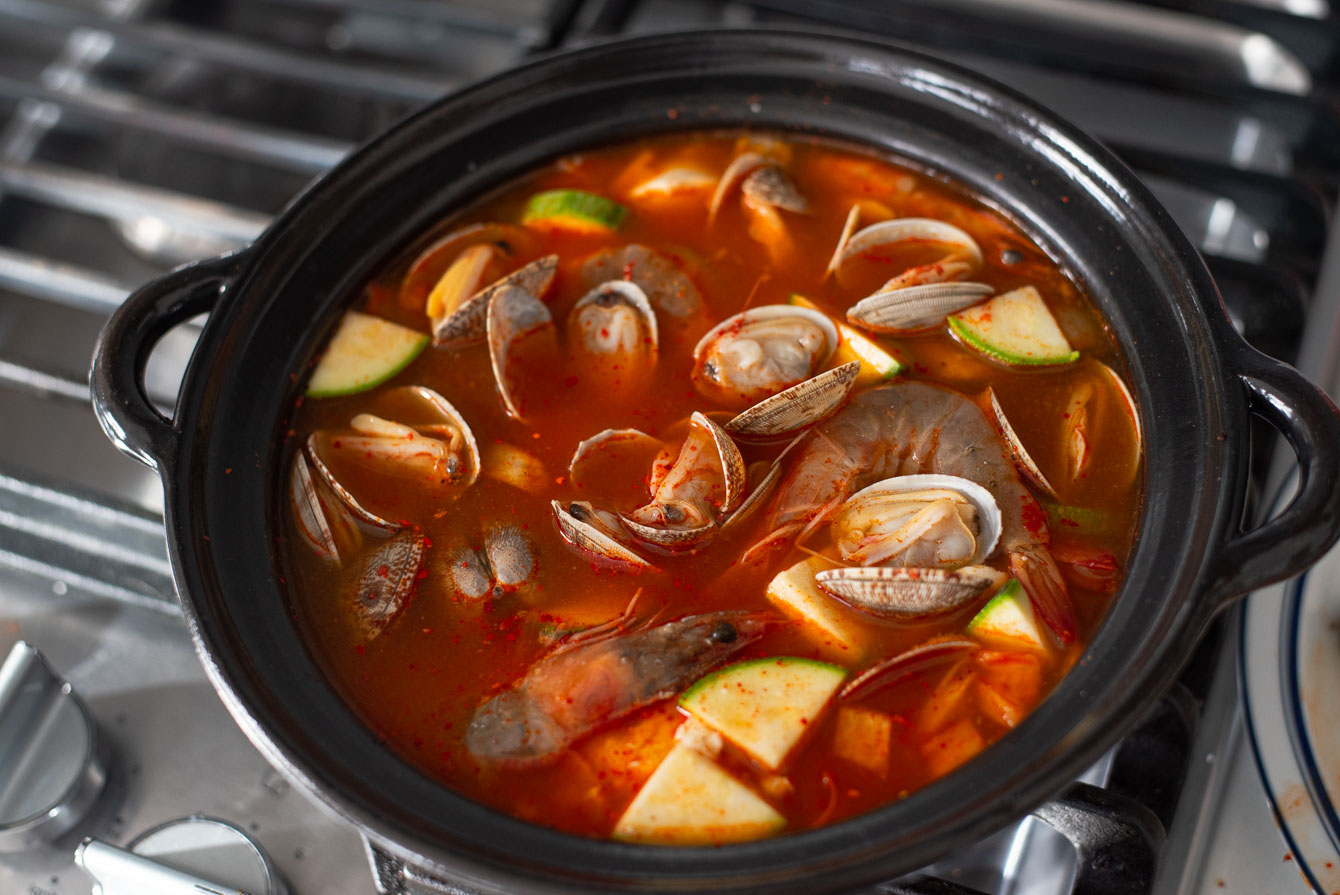
Add enough anchovy stock to just cover the ingredients. Bring to a boil, then simmer until the seafood is cooked.
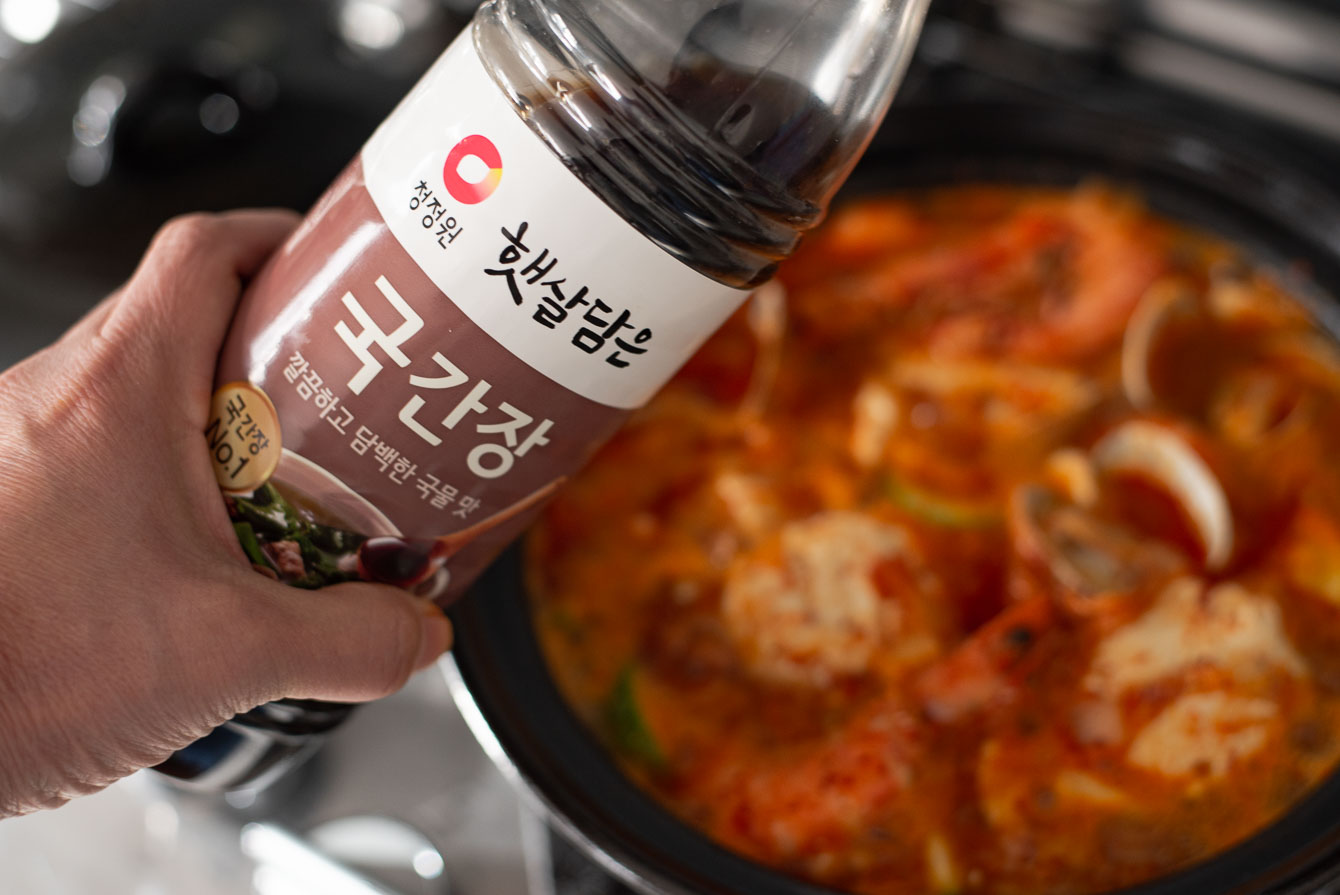
Flavor with Korean soup soy sauce and anchovy sauce. Garnish with green onion and fresh chili. Serve bubbling hot with steamed rice and simple banchan (Korean side dishes).
Can I Make This Without Seafood?
Yes. While clams and shrimp are the classic way sundubu jjigae is served in Korea, the stew is easy to adapt. Thinly sliced beef or pork belly makes it rich and hearty, while mushrooms such as shiitake and enoki give it a satisfying vegetarian flavor.
In my cookbook Korean Cooking Favorites, I share a beef sundubu made with beef and mushrooms together, and in the recipe card below I’ve added a tip on how to adapt this very recipe with ground beef and mushrooms if that’s what you have.
Egg or No Egg on Top?
There’s an ongoing debate, even among Koreans, about whether sundubu jjigae should be finished with an egg. Some diners love cracking it in for extra richness, while others prefer the clean taste of tofu and broth on their own.
At many sundubu restaurants in Korea, the stew arrives still bubbling in a stone pot, with a raw egg served on the side so each person can decide. The residual heat cooks the egg until the whites are set and the yolk remains creamy.
As for me? I usually skip it. I like the flavor of the stew just as it is—but if you enjoy that silky egg finish, go for it.
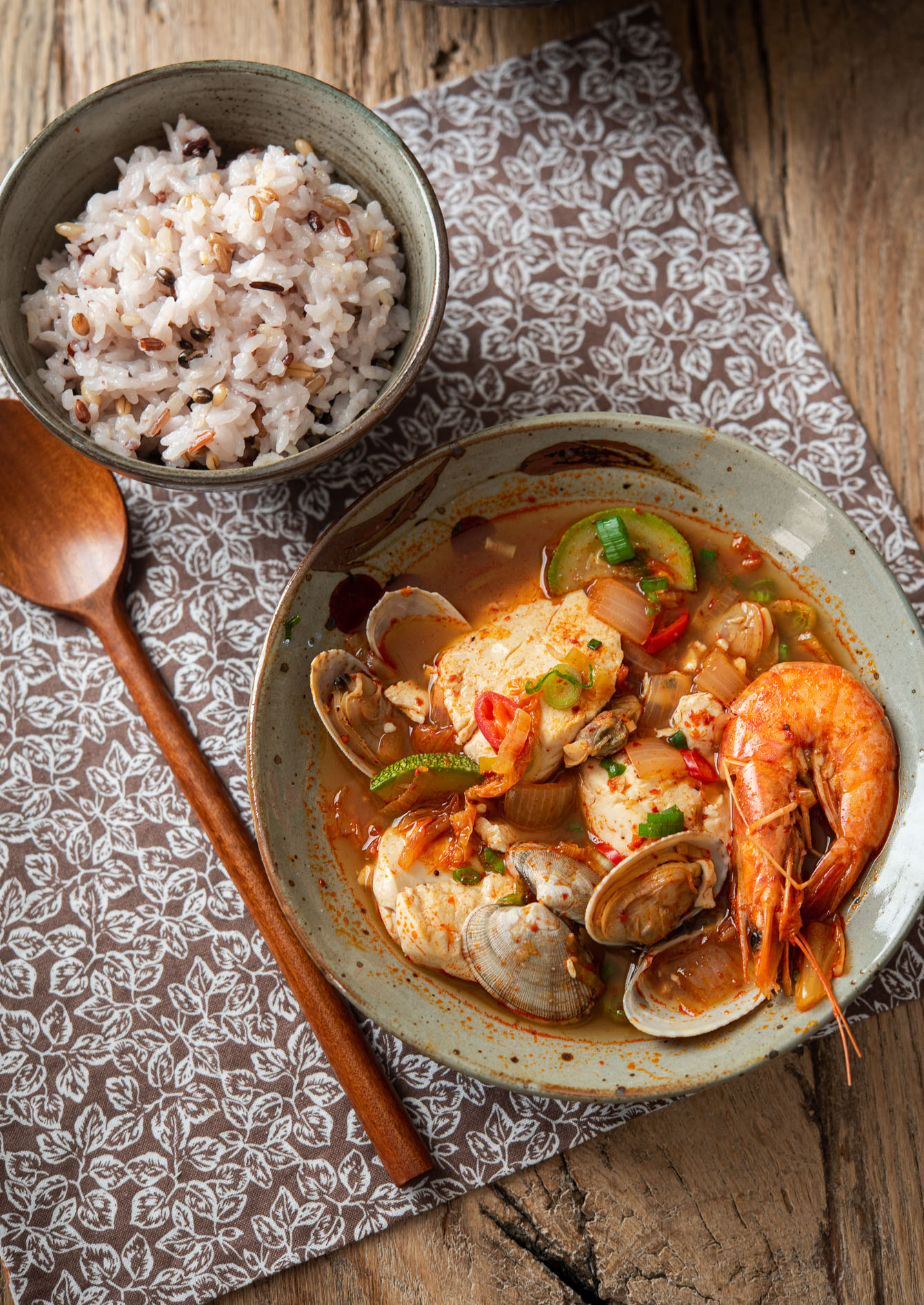
Love this recipe? Rate it and share your experience in the comments below! On Instagram? Tag me to showcase your creation. For more delicious recipes, subscribe to our newsletter!
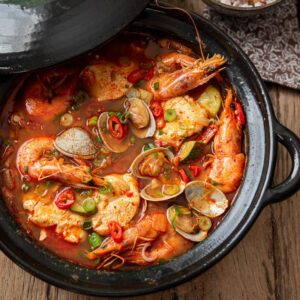
Sundubu Jjigae (Korean Soft Tofu Stew with Seafood)
Ingredients
- 2 tbsp (30 ml) oil
- 1 1/2 tbsp (12 g) Korean chili flakes (gochugaru)
- 1/3 cup (30 g) sliced Asian leek, or green onion
- 1/2 small onion, chopped
- 1 clove garlic, minced
- 1/2 cup (120 g) chopped kimchi
- 1 lb (450 g) silken tofu
- 1/2 zucchini, sliced
- 1/2 lb (225 g) fresh or frozen whole clam, or shelled (use about 1/4 lb)
- 6 (about 120 g) medium raw shrimp, whole or peeled
- 1 tbsp (15 ml) Korean soy sauce (gukganjang)
- 2 tsp (10 ml) Korean anchovy sauce
- 1 green onion, chopped
- 1 fresh chili, optional
- 1 egg, optional
For anchovy stock
- 3 cup (720 ml) water
- 5 large dried anchovy
- 1 large piece dried sea kelp (dashima)
Equipment
Instructions
- Make the stock: combine dried anchovies and sea kelp with water in a pot. Bring to boil and simmer for 3-4 minutes. Discard the sea kelp once water comes to boil. Discard the anchovies and reserve the stock.
- Prep the seafood: If using fresh or frozen whole clams, soak them in cold water for 5 minutes. If you see that the clam shells are open, that’s a good sign. Discard any clams that are closed. If using clam meat, you don’t need to soak it in water.
- Build the flavor: Heat oil in a 1.5 qt pot over low heat. Add Korean chili flakes and the leek (or green onion) and gently stir for 1 minute. Be careful not to burn the chili flakes. Add the onion, garlic, and kimchi and stir-fry for 1-2 minutes over medium heat until soft.
- Add tofu and seafood: Scoop out the tofu (big chunks are better than letting it break into too many small pieces.), zucchini, and seafood. Pour the stock into the pot until it barely covers the tofu and seafood, about 1 3/4 cup. Bring the soup to boil first and reduce the heat to simmer. Simmer for 4-5 minutes.
- Season and Finish: Season the soup with Korean soup soy sauce and anchovy sauce. Taste the broth and season more with salt if needed. Lastly, top with green onion and fresh chili (if using). Serve hot with rice and Korean side dishes (banchan).
- Addition of an egg: If you like to add an egg, crack it right on the soup at the last minute and remove the pot from the heat. The remaining heat in the pot will cook the egg. You can stir the egg to break the yolk while waiting.

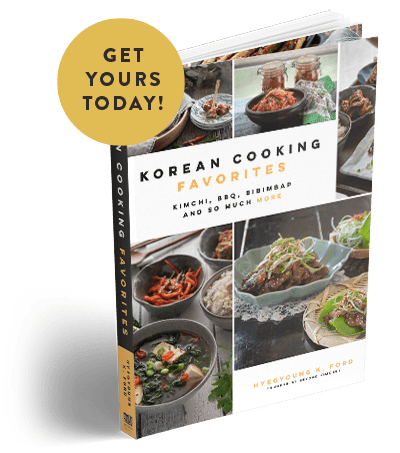
Hi Holly,
Can you tell me what brand you use for the sundubu dish bowl or where I can buy that specific Korean bowl that I can cook most Korean stews on a electric ceramic stovetop I do not have a gas stove, thanks!
Lynda
Hi Lynda
The pot I used in the photo is hard to find online since I bought it at a local pottery shop here in Korea. But I can suggest a Korean stone pot on Amazon that works well for making sundubu jjigae or doenjang jjigae. It’s safe to use on an electric stove, and you can choose the size: for 1–2 servings, the 700 ml pot is perfect; for 3–4 servings, I recommend the 1 liter size.
I tried this recipe out today! I had no clams, so substituted with mussels. I also had to chilli flakes, but I had Korean chilli paste which I added 2 tablespoons. The result was not-too-spicy, yet my tummy was nice and warm after the meal! Thank you for sharing this wonderful recipe!! 🙂
Thanks Joanne. Mussels sounds good with this stew. I am glad that you enjoyed.
Hello Ms. Holly! Im from the Philippines and I LOVE LOVE LOVE Korean food! Ive recently tried out your Denjang jigae recipe and IT WAS AMAZING! I loved it! It tasted just like what they serve in the restos only better. I’m having a problem with this Soondubu recipe though. I just tried out (as in 20 minutes ago) this recipe and it didn’t taste quite right to me. I don’t know if it was just too salty but it tasted off. I didn’t use Korean soy sauce, I used fish sauce. The fish sauce I used however is a LOCAL ONE. Its the Philippine version called PATIS. Is this why it tasted wrong? Should I add sugar?
Hi Alex
Thanks for the comment. I have not tried the Philippine version of fish sauce, but fish sauce is quite different than Korean soy sauce. When I mention soy sauce as “Korean soy sauce” that means it is soy sauce for soup, which is clearer and more pungent than regular soy sauce that we all know. Although Korean soy sauce is saltier than general soy sauce, it is far less saltier than fish sauce. Also fish sauce has its unique flavor that is quite pungent. So I believe the reason your soondubu stew was salty and didn’t taste right was using fish sauce rather than Korean soy sauce if you use the same amount that is given in the recipe. Hope this helps you to solve the problem. If you find the Korean soy sauce for soup, please, try again. It is such a comforting stew to enjoy if you can handle the heat!
Of course. You can omit the clam and use beef instead.
My husband and I do not like clams, but we both really like soondubu (we usually order it with beef in restaurants like BCD Tofu House). Can I use this recipe as-is without the clams?
yummmy!! i love soondooboo! your kids are beautiful!
your kids are so cute!! love soft yolk eggs!
Darling…
Besides the very yummie recipe, your words are always so touching and bring back my own memories, like old pictures hanging in my mind,as precious as those shells that kids collect during summer days in the seashore… and suddenly summer is gone, fall knocks on the doors and here come the silence from winter… and we are not expecting, spring blossoms again!
Yes, we may not be that young anymore… but we still have a beautiful journey ahead us!
J'adore!
Hugs and kisses from southern sky – yeahhh counting days to fly back to my little island, my pearl from North Sea =D
What a beautifully-written entry. And what a delicious looking recipe! Also I am glad you are back from Europe and that you had fun.